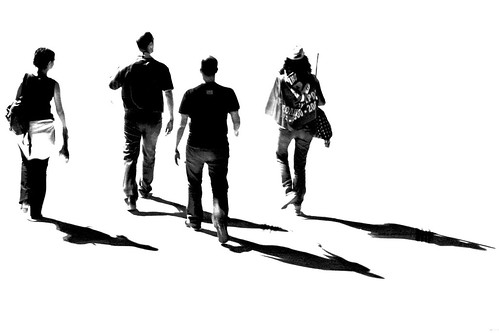
cc licensed ( BY NC SD ) flickr photo shared by greekadman
As a final project for headless ds106, you are asked to produce a story around a character that explores at least three of the media forms we’ve investigated this semester: visual/design, audio, video, web, remix/mashup (Please note that for this project we’re combining visual and design as a single media form). The idea is that you create a narrative arc for a character that is played out in the products of ds106 Assignments, and woven together with context and writing as a standalone blog post.
Step One: The Character
Typically a story centers on the actions and internal growth of central character, be it Frodo Baggins or Cinderella or Luke Skywalker. Your first step is to identify the character you wish to to focus your project on. You could pick a character from a movie/movie/play, a historical person, an imaginary person, a modern day figure. Your options are limitless. But start with the character.
And you are open to play with the idea of character. Can it be an object? How can you make an object have a story?
This is a chance to fabricate story about the character you choose. This is not a factual report or biography; instead, you’ll be creating a fictional narrative around the subject you choose. You have license to bend and distort reality.
You then need to develop a narrative arc for this person; what challenge, unexpected event, unusual journey will you set them out on? Can you put them in an unusual situation or context? What will happen to them in the story? What might be the outcome (“living happily ever after” is not an option!). Reflect back to the ideas you worked on about the shape of a story.
Step Two: Using Assignments to Generate Media
Using the ds106 assignment bank for inspiration, come up with a plan for how to develop a narrative involving the character you chose in Step One. Your plan should include creating at least four media pieces that use at least three forms of the media assignments you worked on in ds106…
For example:
If you chose Cinderella as your topic in step one, you might decide to produce the following set of media pieces:
- Visual/Design: A set of posters for the upcoming royal ball
- Web: A Pinterest board created by the stepsisters planning their outfits and ensemble for the ball
- Audio: A sound effect story of the sisters getting ready for the ball
- Visual: A playlist poem of the songs played at the ball that also explore the narrative of the story.
- Web: A re-made Amazon product page for golden slippers or Consumer Reports report on the features of Pumpkin Carriages, how they are unreliable and left CInderella on her own, where she got the idea for a better form of transport turning her into a mega successful business woman.
But look, this are all media true to the story, how can we make a different narrative for Cinderella than the one we all know? That is the story challenge, to go beyond the literal.
Yes, you can use assignments you have done before. But no, you cannot use media you have done for those assignments; you must create new stuff for this story.
You are creating a media landscape to support your narrative (but not be the narrative alone) built out of the kinds of assignments you’ve been doing all semester. For your project to be substantial you should aim for the total points of your assignments to be worth 15-20 stars. However, we do NOT want to limit you to ONLY those assignments that already exist in the repository. They can serve as inspiration, and you can come up with your pieces, even if they are not explicit, existing assignments.
And hey, if you see a need, it is allowable to create a new assignment for media you might need.
Creating the media pieces is part of the project, how you weave them together and present them in your web site as a complete story is the goal. But all media should serve the arc of the story.
Step Three: Weaving the Story
Produce your project and publish it on as a single post on your blog. It should be a completely self-contained story, with all the media embedded, and sufficient written narrative in the post to connect the pieces. This should not be just a list of links to media, nor a series of media alone. It has to be a story that stands by itself. It should not contain references to the assignments or how it was made (that comes separately).
You might want to review examples done by UMW students in Spring 2013 class or Fall 2013.
Be very thorough, check your links and embeds, as this is a product that should stand on its own and explain itself as a story.
And that is the end of this headless ds106 story. Or is it? May you all live happily ever after. That is definitely an option.



Add a comment